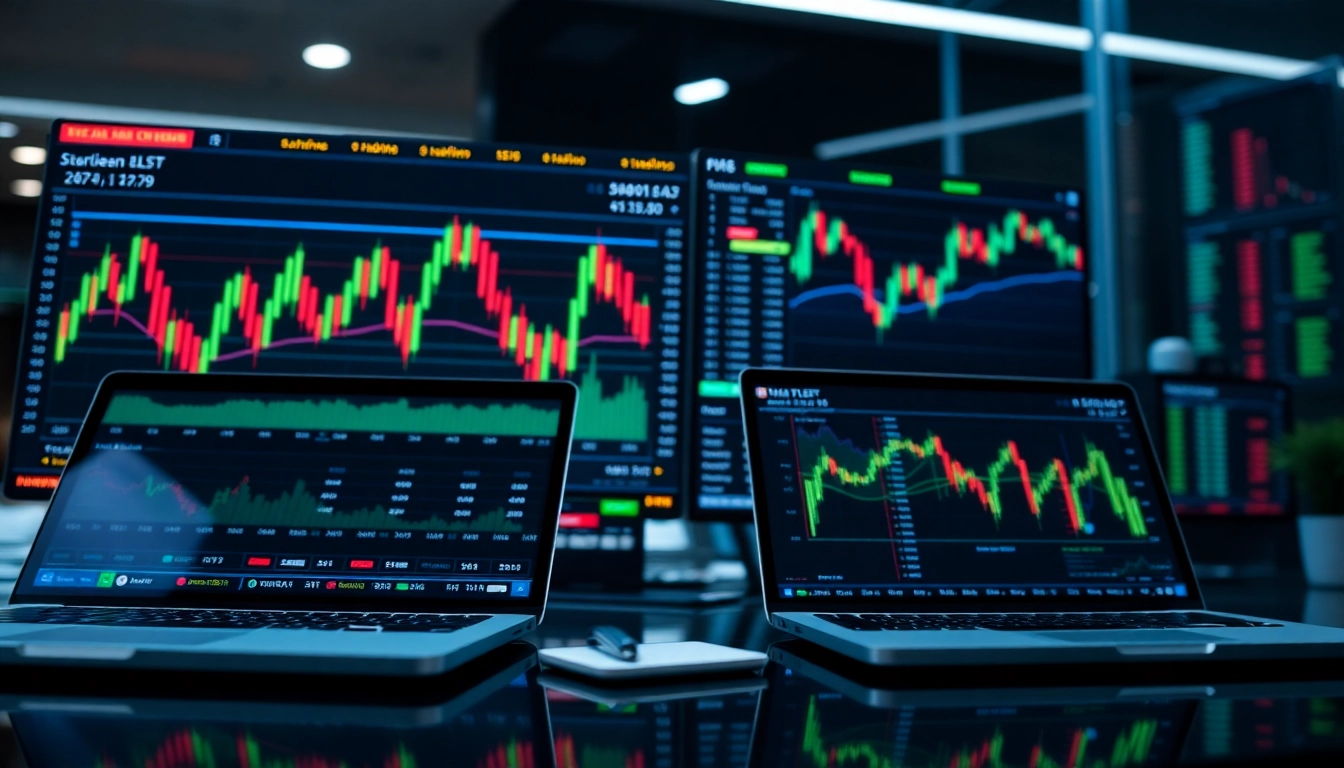Master the Market: A Comprehensive Online Trading Guide for Investors
Introduction to Online Trading and Its Benefits
In today’s rapidly evolving financial landscape, online trading has become a cornerstone for investors seeking efficiency, accessibility, and a broad spectrum of asset options. With advancements in technology and a surge in user-friendly platforms, online trading democratizes market participation, allowing individuals to access global markets from the comfort of their homes. Whether you’re a seasoned investor or just starting out, understanding the dynamics of online trading is essential for building a resilient and profitable investment portfolio.
For newcomers, navigating the vast universe of online trading platforms can seem daunting. However, leveraging credible resources like the Online Trading Guide offers comprehensive insights into platform selection, trading strategies, and risk management. This guide helps streamline decision-making processes, ensuring that investors capitalize on market opportunities while minimizing pitfalls.
Benefits of online trading include real-time access to market data, lower transaction fees, and the convenience of executing trades 24/7. These features empower investors to react swiftly to market movements, implement complex strategies, and diversify their portfolios efficiently.
Building Your Trading Strategy with Our Guide
Fundamental vs. Technical Analysis
Constructing an effective trading strategy requires a solid understanding of two primary analysis methods: fundamental and technical analysis. Fundamental analysis involves evaluating a company’s financial health, economic indicators, and industry prospects to determine intrinsic value. Investors who adopt this approach focus on earnings reports, economic news, and macroeconomic trends to make informed decisions.
In contrast, technical analysis examines historical price charts, trading volumes, and various indicators to identify patterns and forecast future price movements. This approach is particularly popular among day traders and short-term investors seeking rapid gains based on market momentum. Combining both methods can optimize decision-making, providing a holistic view of market conditions.
Risk Management Techniques
Risk management is the foundation of sustainable trading. Techniques such as setting stop-loss and take-profit orders help limit potential losses and secure profits systematically. Diversification across asset classes reduces exposure to individual market volatility, while position sizing ensures that no single trade jeopardizes the overall portfolio.
Furthermore, maintaining emotional discipline and adhering to a predefined trading plan prevents impulsive decisions driven by market sentiment. Regularly reviewing trading performance and adjusting strategies accordingly is critical for long-term success.
Developing a Consistent Trading Routine
An organized and disciplined routine enhances trading efficiency. Establish a daily schedule that includes market analysis, strategy review, and performance tracking. Consistency ensures that you stay informed about market developments and reduce errors caused by fatigue or complacency. Incorporating routine risk assessments, journaling trades, and staying updated with news feeds further reinforces good trading habits.
Tools and Resources for Effective Trading
Choosing the Right Trading Platform
Selecting a reliable trading platform is paramount. Factors to consider include user interface, execution speed, security measures, and available assets. Platforms like MetaTrader 4/5, Thinkorswim, and proprietary broker applications offer diverse features catering to various trading styles. Prioritize platforms with low latency, comprehensive charting tools, and robust customer support.
Utilizing Analytical Tools and Indicators
Leverage technical indicators such as Moving Averages, RSI, MACD, and Bollinger Bands to identify entry and exit points. Combining multiple indicators enhances signal accuracy and minimizes false positives. Fundamental data, including economic calendars and earnings reports, complements technical analysis by providing context to price movements.
Leveraging Educational Resources and Tutorials
Continuous learning is vital in the dynamic world of online trading. Many platforms and financial websites offer tutorials, webinars, and market analyses. Engaging with these resources accelerates skill development, improves strategy refinement, and helps stay ahead of market trends.
Practical Steps to Start Trading Online
Setting Up Your Account Safely
Establishing a trading account involves verifying your identity and ensuring compliance with regulatory standards. Use strong, unique passwords and enable two-factor authentication to secure your account. Choosing a regulated broker minimizes fraud risks and enhances protection of your funds.
Starting Small and Building Confidence
Begin with a demo account or small capital to gain practical experience without exposing yourself to significant risks. Practice various strategies, monitor outcomes, and adjust your approach before scaling up investments.
Tracking Performance and Adjusting Strategies
Maintain detailed records of trades, including rationale, outcomes, and lessons learned. Regular review helps identify strengths and weaknesses, enabling continuous improvement and strategy optimization.
Measuring Success and Staying Informed
Key Performance Metrics to Monitor
Track metrics such as win/loss ratio, return on investment (ROI), and maximum drawdown. These indicators provide insights into trading effectiveness and risk exposure. Setting benchmarks helps measure progress and maintain discipline.
Staying Updated with Market News
Timely information is crucial for informed decision-making. Follow reputable financial news outlets, subscribe to newsletters, and leverage economic calendars to anticipate market-moving events.
Continuous Learning for Long-Term Growth
The world of online trading is continuously evolving. Enroll in advanced courses, participate in trading forums, and learn from experienced investors to refine skills and adapt to changing market conditions. Staying educated ensures sustained growth and resilience against volatility.



